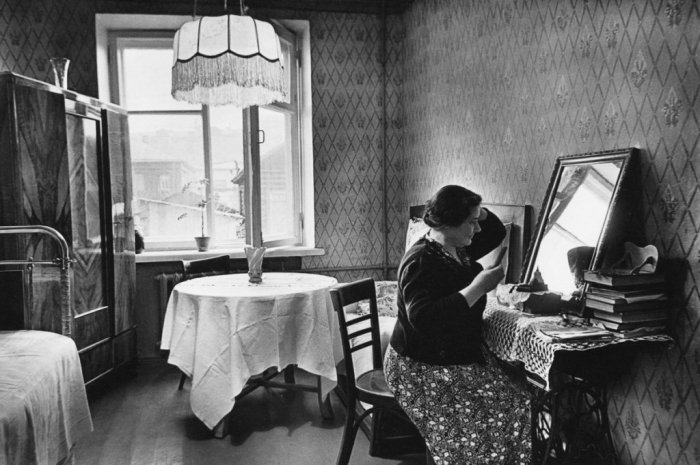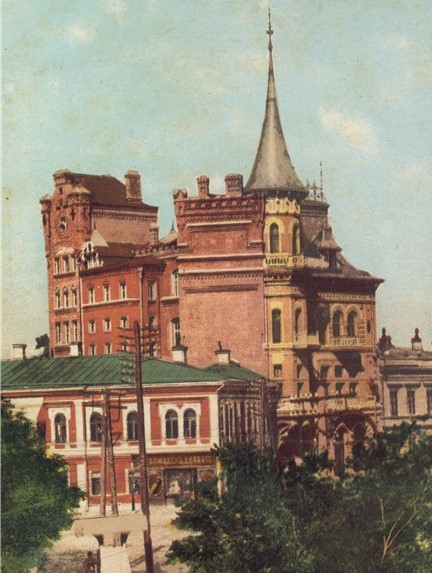
Kyiv’s Tsarist And Stalinist Buildings
How many times have we heard of Stalinist and Tsarist houses, seen these words in ads, and heard about them from other people – but not every person could distinguish one building from another. So, we invite you to puzzle it out with us.
Let’s have a quick overview of the types of buildings we will mention in this article:
Types of Stalinist buildings
The name for Stalin apartments and houses came from the period in which they were built. In 1935-1960, houses of improved planning with large rooms for the party elite and departmental workers were built throughout the country. These houses are often red or white brick and have up to 5 floors, large window openings, wide and comfortable entrances, quiet backyards, and intellectual neighbors.
High-quality utility infrastructure was installed in Stalinist buildings, and still faithfully works in most of them. Generally, the government chose a building site near big factories and in the city’s downtown, making the location convenient for the residents. Following chronologically, construction of Stalinist houses can be divided into pre-war and post-war buildings.

Pre-war houses
The pre-war buildings of the 1930s are unmatched for the time and resources allocated to them. Often, they have elegant facades, various decorative features, and comfortable floor plans that could easily accommodate big families without feeling cramped. At that time, they were built not only as convenient apartments but also as a city decoration. These apartments often consisted of several bedrooms, a library, a bathroom, and a kid’s room.
The longest pre-war house built in Kyiv is located in Pechersk at 7/14 Bohomolets Street. The 5-story building, which has 21(!) entrances but only 177 apartments, occupies almost the entire odd side of the street. From other sides, the 430-meter-long house is extended by neighboring houses, built back to back, making it appear even longer. This gray Stalinka is designated an architectural monument and is protected by law. It was erected for the NKVD (precursor to the KGB) in 1935 and was known by the symbolic name “House of NKVD Members”.


Post-war houses
After WWII and all the devastating city destruction, there was no time to think about delicate architectural solutions, as practically all locals were left without a roof over their heads. So the government’s goal was to provide people with housing as quickly as possible. Apartment buildings were constructed from cheaper materials than the pre-war buildings, less attention was paid to the building exterior, and planning transformed into a more rational one: communal flats. Despite all the difficulties of that time, both pre-war and post-war Stalinist houses have great quality and also could be divided into nomenclature and general usage buildings.
Nomenclature houses
Nomenclature buildings were created for the highest echelons of Soviet society, like party leaders, high-ranking military officials, workers of power structures, etc. The distinguishing features of these buildings are a big hall, 2-3 apartments per floor, and classic architecture forms with stucco moldings, bas-reliefs, sculptures, and ceilings at least 3.2 meters high. Nomenclature Stalinist houses were built on the main streets and, traditionally, they each had an individual design and stood as architectural sightseeing spots.
The house that every person has seen in Kyiv is the House with a Star at 25 Khreshchatyk Street. Built in 1954, this 15-floor building was the tallest one in the city until 1981. According to an early version of the post-war reconstruction of Khreshchatyk, the government was supposed to build a squat House of People’s Assemblies, covered with a dome, on the place of the current house. But these plans didn’t come to fruition and instead of the House of People’s Assemblies, an 85-meter residential high-rise appeared. Today, famous Ukrainian artist Andrei Danylko, best known by the name Verka Serdyuchka, lives there.


General usage house
General usage or Typical Stalinist buildings are more humble homes where you can find both 3-4 bedroom apartments and communal flats. The overall size is smaller compared to the nomenclature buildings, and they are located much further from the city center. Often, they are built in a duplicate design, contributing to a neighborhood’s identical mass development.
Stalinist houses today are elite types of housing due to their monumental construction and Soviet quality. They have interesting infrastructure and architectural solutions, are located on central streets just a few minutes from a metro stop, and have landscaping and nice backyards, so they are still in demand.
Tsarist buildings
Erected before the last century, Tsarist buildings saw the greatness and downfall of entire eras, empires and leaders were replaced, several wars and revolutions walked through their courtyards. They are called Tsarist houses because they were built before the 1917 Soviet revolution, when there was a real construction boom caused by urbanization. They are mainly located in the central areas of the city and often are historical and architectural monuments. In fact, many of them even have memorial plaques describing the house’s glorious history, the events that took place in it, or its outstanding residents.
The peculiarity of these houses is that each of them is a piece of architectural art. In those days, there were no standard buildings and designs, so each house was created individually. Outside and inside, they were decorated with stucco, sculptures, and wallpaper, which was considered very chic, even in the main hall. Unfortunately, few Tsarist buildings have survived in their original form as fires, wars, and communism led to significant changes inside and out. This is especially true of planning. In 1918-1920, the so-called “compaction” was carried out. It meant that other families were settled in an apartment where there was a surplus of living space. From 1897 to 1917, there were approximately 1,926 tenement houses in Kyiv. They were state-of-the-art equipped, with an elevator, telephone, electricity, stove heating, fireplaces, separate rooms for servants, and refrigerators. The first and second floors were leased for commerce like shops, hairdressers, or offices.

The buildings themselves were brick and the sizes are amazing – the thickness of the walls reach 0.8-1 meter and the average height of the ceiling in apartments is 4-4.5 meters.
But, unfortunately, a lack of funding, repairs, and maintenance (often only elderly residents live in the apartments) has led to a significant percentage of buildings being dilapidated or destroyed by time and indifference. However, in spite of the shabby appearance, old utility lines, and abandoned basements, the cost of apartments in these houses is quite high. And prices for apartments in renovated houses are consistently holding the top positions, successfully competing with prices for new buildings in the elite segment.
One of the most famous tenement Tsarist houses is Podhorny House, located at the very beginning of Yaroslaviv Val Street. It’s history began in the 19th century when Mikhail Podhorsky ordered a house built on Podhornaya Street (the old name of Yaroslaviv Val Street) in the popular style of that time, modernized gothic. Since it was erected at the end of the 19th century, the house has never been uninhabited. By the way, among those who have lived in house #1, both in the pre-war and post-war years, is one of the luminaries of Kyiv midwifery and gynecology, Professor and Doctor of Sciences M.F. Aizenberg.


Considering all these buildings survived war, revolutions, and different political regimes, they are still the same. They stand in the most prestigious areas of Kyiv, their residents are intellectuals, and their backyards are still quiet and green and ready to hide you from the hustle and bustle of the city. That’s because the demand for these houses is always high, which Vestor.Estate’s portfolio justifies by constantly increasing the number of apartments in Tsarist and Stalinist buildings in downtown Kyiv.
Just in several days, we will release a new video with the CEO & founder of Vestor.Estate Sean Almeida, where he gave a big interview with Sam Kearley talking about real estate and Ukraine on our YouTube channel. Subscribe to us not to miss it! For now, we invite you to watch the video about Kyiv, we filmed last summer!




